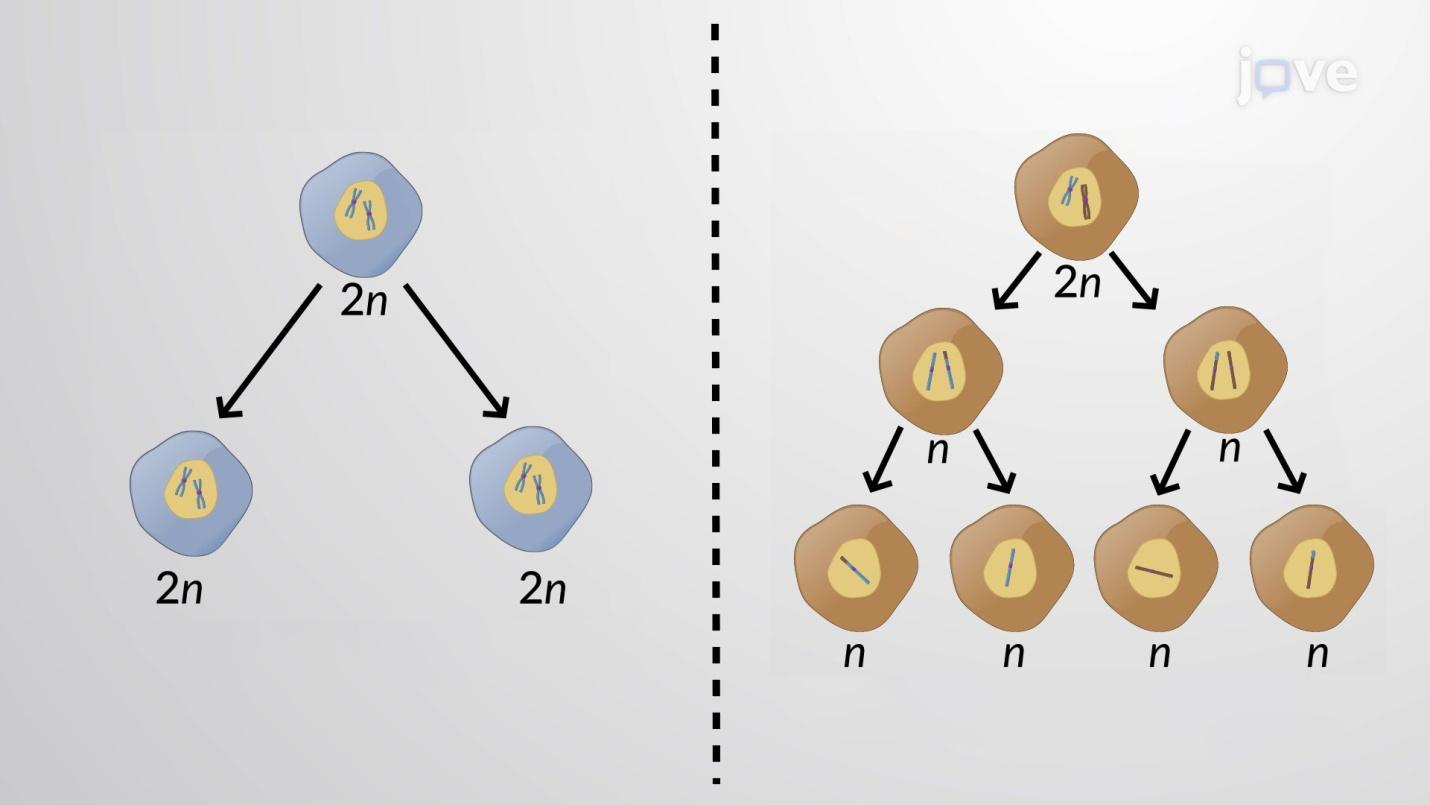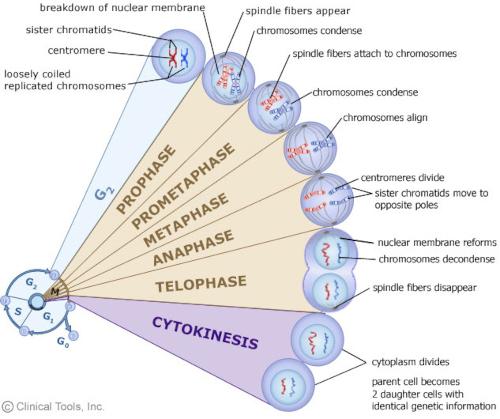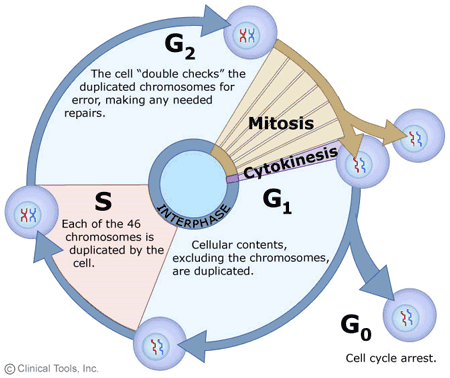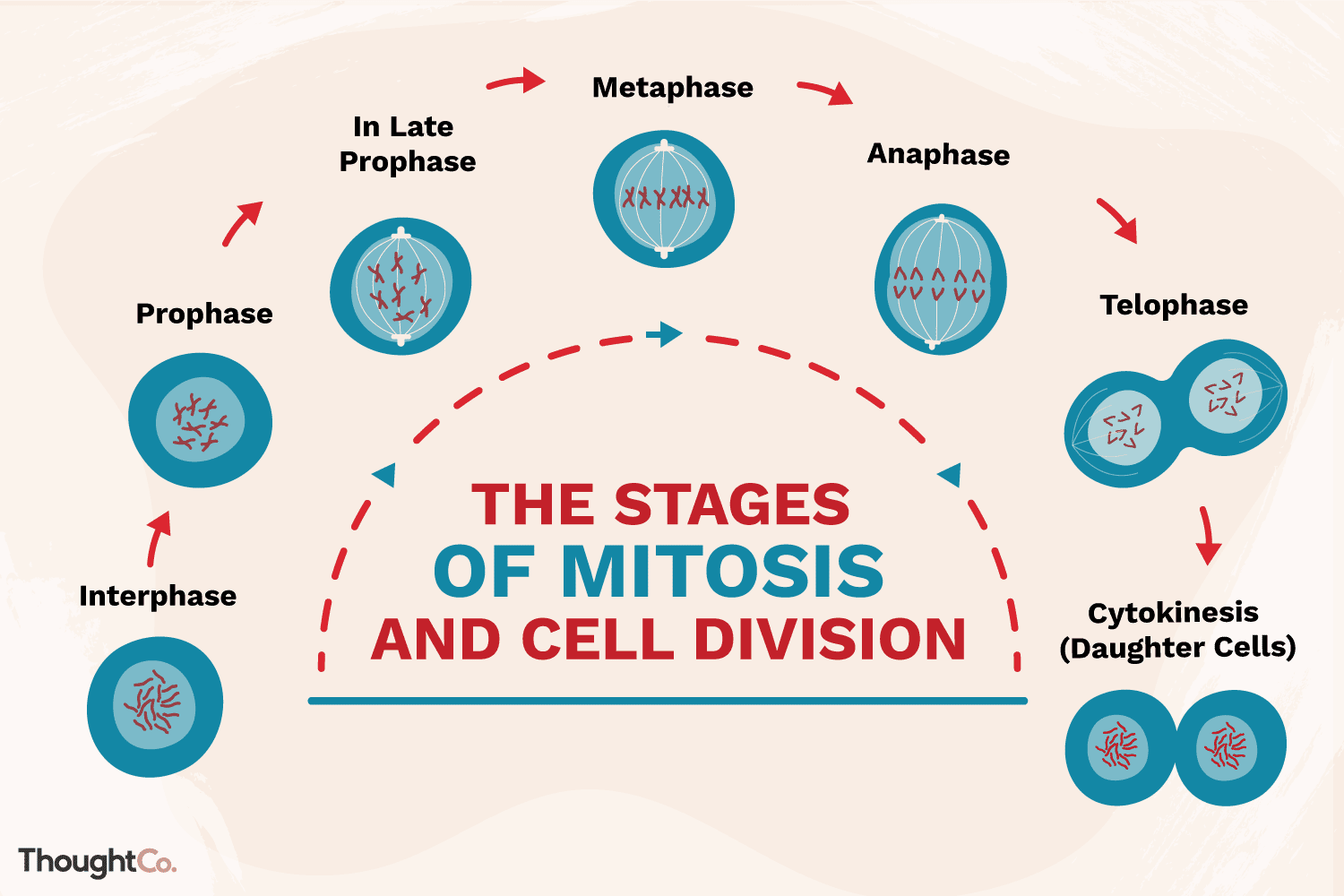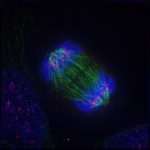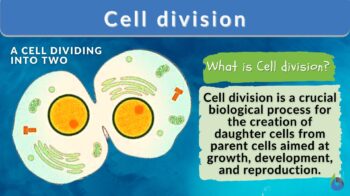
Cell division
n., plural: cell divisions
[]
Definition: sɛl dɪˈvɪʒən
Table of Contents
Cell division is a biological process by which a parent cell duplicates its cell contents and divides to give rise to two or more daughter cells. It is an irreplaceable biological process in all living organisms; being the “means of growth, repair, and reproduction in multicellular organisms” and “the sole source of reproduction in unicellular organisms”.
Don’t we all agree that the topic of cell division is fascinating beyond imagination where the miracle of life unfolds at a microscopic level? Did you know that every second, millions of normal cells within your body are undergoing cell proliferation, and division, perpetuating the captivating dance of growth, repair, and reproduction? Can you imagine that you continuously shed skin cells throughout the day and new cells replace them due to the activity of cell division? Can you guess what goes wrong in cells that they turn into cancerous cells?
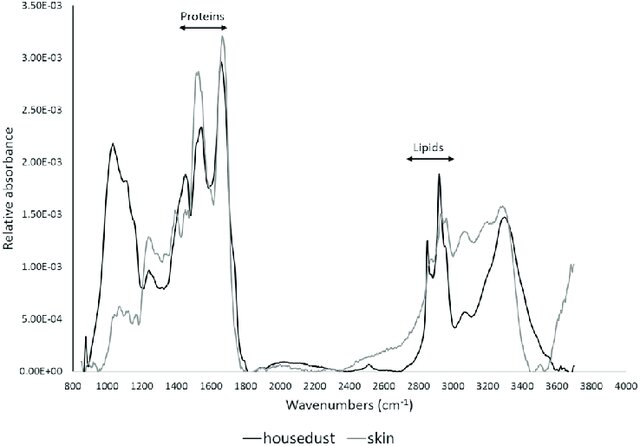
Cell division is a fundamental process that enables multicellular living organisms to develop from a single cell into complex organisms, while it is the typical mode of reproduction for unicellular organisms. It also plays a crucial role in maintaining tissue integrity.
In the life of typical rapidly dividing human or animal cells with a total cycle time of 24 hours, the duration of each phase is as follows —
- The initial phase, the G1 phase, spans approximately 11 hours…
- This is followed by the S phase lasting approximately 8 hours and subsequently,
- The G2 phase occurs over approximately 4 hours,
- This culminates in the M phase which lasts for approximately 1 hour.
What is astounding here is that cell division lasts only 1 hour in the 24-hour-long cell cycle. Even though cell division constitutes such a minuscule part (5%) of a larger cell cycle, it manifests some of the most intricate steps of cell cycle control like ensuring duplication of the genetic material of the cell, overseeing the proper assembly of genetic material into precise genetic configurations, and also its subsequent separation into 2 new daughter cells or progeny cells wherein each cell receives a complete set of genetic instructions.
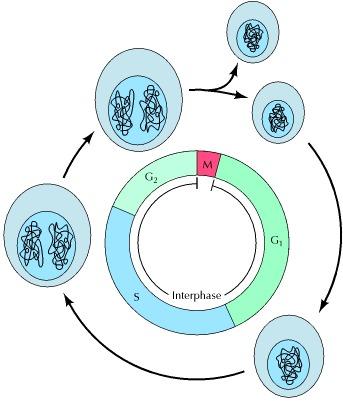
So, read on to learn more about cell division and how this remarkable mechanism drives the ceaseless renewal of life, and body repair, and ensures genetic diversity in species and gamete formation.
Cell Division Definition
Cell division can be defined as a crucial biological process wherein a single parent cell divides resulting in the formation of two or more daughter cells. This process is integral for various biological functions like:
- Growth
- Development
- Tissue repair
- Reproduction
Watch this vid about cell division:
Biology definition:
A cell division is a process in which the parent cell divides, eventually giving rise to new daughter cells. It is an essential biological process in many organisms. It is the means used by multicellular organisms to grow, replenish (repair), and reproduce. In unicellular organisms, cell division is equivalent to reproduction. There are two forms of cell division: (1) direct cell division and (2) indirect cell division.
- Direct cell division is one in which the nucleus and the cytoplasm of the cell divide directly into two parts. This form of cell division is also referred to as amitosis.
- In contrast, indirect cell division involves complicated changes within the cell, e.g. formation of chromosomes, before the parent cell divides and produces daughter cells. Mitosis is a cell division that involves an indirect method of producing daughter cells.
Cell division is commonly used interchangeably with mitosis, a process comprised of karyokinesis and cytokinesis resulting in two genetically identical cells. Nevertheless, cell division is not exclusive to mitosis; it is also happening in meiosis, which, in comparison, is a process giving rise to cells with non-identical genetic material. Thus, cell division is a biological process involved in the growth and reproduction of various organisms. It is part of the organism’s cell cycle.
Types Of Cell Division
Cell division encompasses different types of division which are discussed under the heading:
- Cell division Mitosis: Mitosis is a unique type of cell division that can be observed in both somatic (non-reproductive cells) as well as germinal cells (egg cells and sperms). It involves a series of tightly regulated and organized steps that lead to the formation of two daughter cells. These genetically identical daughter cells (genetically identical to the parent cell) contain an equal number of chromosomes. Mitosis is known to aid several processes like tissue growth, maintenance, and asexual reproduction.

Figure 3: Can you identify the 2 types of common cell division? Guess by noticing the number and ploidy level of the daughter cells. Image Credit: JoVe - Cell division Meiosis: Meiosis is a specialized form of cell division that occurs in only germinal cells (egg and sperm cells) and not in somatic cells. This type of cell division is specifically designated for sexual reproduction in reproductive cells. It consists of two successive divisions that eventually result in the production of 4 daughter cells (or 4 gametes). These daughter cells are “genetically different” from the parent cell. Also, gametes don’t contain an equal number of chromosomes as the parent cell. Each daughter cell is composed of “half the number of chromosomes” when compared to the parent cell. Meiosis is primarily responsible for genetic variation through processes such as genetic recombination.
- Cell division Amitosis: Amitosis is a less common type of cell division that’s usually observed in some specific single-celled organisms or specific cells within multicellular organisms. It differs from mitosis and meiosis as it does not involve the characteristic formation of a mitotic spindle apparatus or the precise separation of chromosomes. (Read more here: A unique type of cell division called “Amitosis”)
Prokaryotic Cell Division
Some important points to note about prokaryotic cell division are:
- The process by which prokaryotes’ cell division occurs is very simple.
- The cell division process for prokaryotes is usually a means of reproduction for them.
- Since prokaryotes don’t have a very complex structure and are devoid of any cell organelles (organellar structures), cells divide by simple type of binary fission or budding, both of which are asexual methods of reproduction. They have got only 1 membrane as the structural constituent. This is why when prokaryotic cell division begins, it manifests as a simple DNA replication step followed by doubled DNA splitting into half (2 identical copies of the genetic material).
- Cell elongation: Following DNA replication, the prokaryotic cell elongates to accommodate the duplicated genetic material.
- Prokaryotic cell division also includes a step of septum formation wherein a septum (or a cell wall) begins to form at the midsection of the elongated cell which aids the final dividing step. The septum eventually grows inwards leading to the final separation of the 2 compartments and the formation of 2 distinct daughter cells. This results in the physical separation of the parent cell into 2 individual daughter cells.
- The newly formed daughter cells are capable of independent functioning and carrying out their cellular processes like metabolism, growth, and replication.
- Speed: Talking about speed, prokaryotic cell division is quite rapid. Under optimal conditions, prokaryotic cells can divide and generate multiple generations within a short span of time.
- Genetic stability: Talking about the genetic stability of offspring, as the replicated DNA is faithfully divided and distributed between the daughter cells, prokaryotic cell division ensures substantial genetic stability.
- Adaptability and evolution: Prokaryotic cell division plays an instrumental role in the adaptation and evolution of prokaryotic organisms by facilitating genetic variation and the accumulation of beneficial mutations.
- Since prokaryotic cells also have plasmids, the plasmid DNA also gets duplicated during binary fission.
- There is the presence of a divisome; it is an atypical protein complex that aids prokaryotic cell division in bacteria. It takes care of the cell division process by:
- Ensuring inner & outer membrane constriction during prokaryotic cell division process.
- Ensuring that correct peptidoglycan cell wall remodeling happens at the division site.
- There is also the presence of FtsZ, i.e., a tubulin-like protein that has an integral role in the contractile ring formation during prokaryotic cell division.
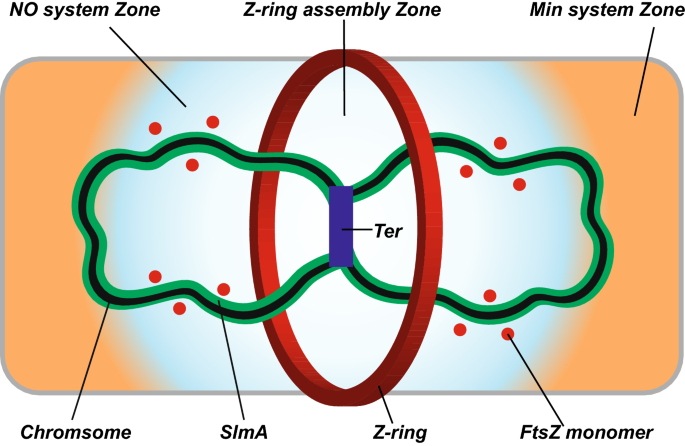
Eukaryotic Cell Division: Mitosis
Some important points to note about mitosis type of cell division in eukaryotes are as follows:
- It is also called equational division.
- The process by which the mitotic type of eukaryotic cell division (a smaller part of the eukaryotic cell cycle) occurs is relatively more complex than the prokaryotic one.
- Unlike prokaryotes, this type of eukaryotic cell division process is not just a means of reproduction but also ensures growth, repair, and other metabolic functions.
- Amongst the 2 types of cell divisions in eukaryotic organisms, mitosis is the first type.
- Since eukaryotic organisms are replete with membrane-bound cell organelles, it’s not just the DNA that has to replicate and divide but the cytoplasmic content (including cell organelles) too has to double. This increases the difficulty of the mitotic type of cell division relative to prokaryotic cell division
- In eukaryotes, mitotic cell division occurs after the interphase (G1, S, G2 phases).
- Interphase is marked by the DNA synthesis and duplication of organelles and always precedes cell division.
- Mitosis comprises 4 main phases:
- Prophase (where chromosomes condense and the nuclear envelope disintegrates)
- Metaphase (where the chromosomes line up at the metaphase plate)
- Anaphase (separation of sister chromatids)
- Telophase (formation of two daughter cells with distinct cytoplasmic and genetic material)

Figure 5: Different phases of mitosis. Image Credit: University of Leicester 
Figure 6: Different phases (G1, S, and G2 phase) preceding mitosis. Image Credit: University of Leicester
- Since many eukaryotic organisms are multicellular and reproduce by sexual means, they require another means of division where they can combine their DNA (scope of recombination) with other organisms’ DNA. This need is not sufficed by the mitotic type of cell division.

Figure 7: Different steps of mitosis and cell division. Image Credit: ThoughtCo
Eukaryotic Cell Division: Meiosis
- Also called reductional division.
- The process by which the meiotic type of eukaryotic cell division occurs is relatively more complex than both prokaryotic binary division/budding and eukaryotic mitotic type of cell division.
- Just prokaryotes, this type of eukaryotic cell division process is an essential means of reproduction. It ensures that gamete formation occurs properly and genetic diversity is maintained in the species.
- Amongst the 2 types of cell divisions in eukaryotic organisms, meiosis is the second type.
- This type of cell division occurs in sexually reproducing organisms.
- Just like mitosis, DNA, and organelles are replicated in the interphase before meiotic cell division.
- Meiosis comprises 2 sets of divisions:
- Meiosis I (marked by the separation of homologous chromosomes)
- Meiosis II (marked by separation of sister chromatids; this is similar to mitosis)
- At the end of meiotic cell division, four daughter cells (gametes) are formed, unlike 2 daughter cells in mitotic cell division.
- All daughter cells, i.e., gametes produced after meiosis have just 1 one copy of the genome, making them haploid (four haploid daughter cells).
- Only after one gamete fuses with the gamete of the opposite sex during fertilization, the ploidy level is restored.
Cell Division Stages
The cell division stages vary among organisms.
Mitosis Stages
The different stages of mitosis are:
Lastly, it’s followed by cytokinesis.
Meiosis Stages
The different stages of meiosis are:
- Prophase I
- Metaphase I
- Anaphase I
- Telophase I
- Cytokinesis
- Prophase II
- Metaphase II
- Anaphase II
- Telophase II
Lastly, it’s followed by cytokinesis again.
You can read about different phases like interphase and different phases of mitosis in detail in our comprehensive linked articles. For someone interested to read more about chromosomes and sister chromatids, our linked articles are well organized for them too! ☺
NOTE IT!
A unique type of cell division called “Amitosis”
Amitosis is a type of cell division observed in only certain categories of organisms. It is special because of its simplicity and directness. Unlike other forms of cell division that involve complex steps and precise chromosome separation, amitosis occurs through a relatively straightforward process. The parent cell simply divides directly into two or more daughter cells “without the involvement of elaborate machinery or intricate genetic reorganization”.
So, what does that mean to us?
This simplicity in amitosis can be fascinating as it highlights an alternative mechanism for cell division that ‘bypasses the intricate processes’ like:
- Chromosome duplication
- Spindle formation
- Precise chromosome segregation
These processes are otherwise integral to other types of cell division like mitosis or meiosis. While amitosis is less common and primarily observed in simpler organisms or specific cells within multicellular organisms, it serves as a reminder of the diverse strategies that living organisms have developed to ensure their survival and reproduction. Amitosis primarily contributes to the growth or asexual reproduction in simpler organisms.
Additionally, amitosis can offer insights into the unique characteristics and capabilities of the organisms or cells in which it occurs. By directly dividing and producing daughter cells with identical genetic material, amitosis can contribute to rapid growth and asexual reproduction in certain organisms, allowing them to adapt and thrive in their specific environments.
Amitosis thus serves as a remarkable example of the diversity and adaptability of cell division mechanisms in the natural world, shedding light on the wide range of strategies employed by living organisms to perpetuate their existence.

Take the Cell Division – Biology Quiz!
References
- Gustafsson, Å., Krais, A. M., Gorzsás, A., Lundh, T., & Gerde, P. (2018). Isolation and characterization of a respirable particle fraction from residential house dust. Environmental Research, 161, 284-290.
- Cooper GM. The Cell: A Molecular Approach. 2nd edition. Sunderland (MA): Sinauer Associates; 2000. The Eukaryotic Cell Cycle. Available from: https://www.ncbi.nlm.nih.gov/books/NBK9876/
- den Blaauwen, T. (2013). Prokaryotic cell division: flexible and diverse. Current opinion in microbiology, 16(6), 738-744.
- Gupta, R., Gupta, N., Gupta, R., Gupta, N., & Saini, M. (2021). Diversity of Prokaryotes. Fundamentals of Bacterial Physiology and Metabolism, 3-42.
- Bertrand, R. L. (2019). The lag phase is a dynamic, organized, adaptive, and evolvable period that prepares bacteria for cell division. Journal of Bacteriology, 201(7), 10-1128.
- Carlton, J. G., Jones, H., & Eggert, U. S. (2020). Membrane and organelle dynamics during cell division. Nature Reviews Molecular Cell Biology, 21(3), 151-166.
- Bradbury, E. M., Inglis, R. J., Matthews, H. R., & Langan, T. A. (1974). Molecular basis of control of mitotic cell division in eukaryotes. Nature, 249(5457), 553-556.
- Conklin, E. G. (1917). Mitosis and amitosis. The Biological Bulletin, 33(6), 396-436.
- Fu, Y. X., Wang, G., Chen, K., Ma, X., Liu, S. Q., & Miao, W. (2022). Amitosis as a strategy of cell division—Insight from the proliferation of Tetrahymena thermophila macronuclei. Theoretical Population Biology, 145, 52-62.
©BiologyOnline.com. Content provided and moderated by Biology Online Editors.
